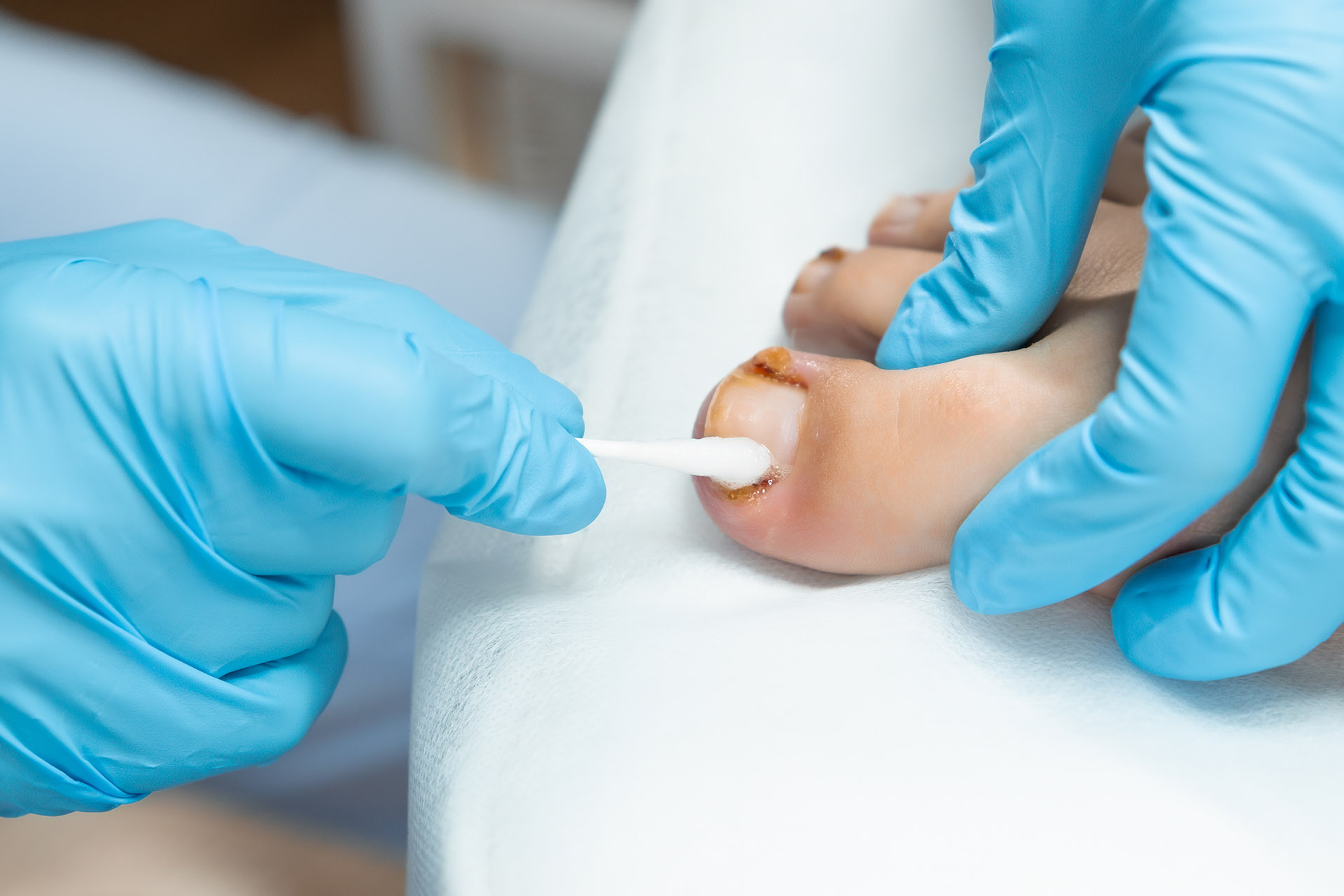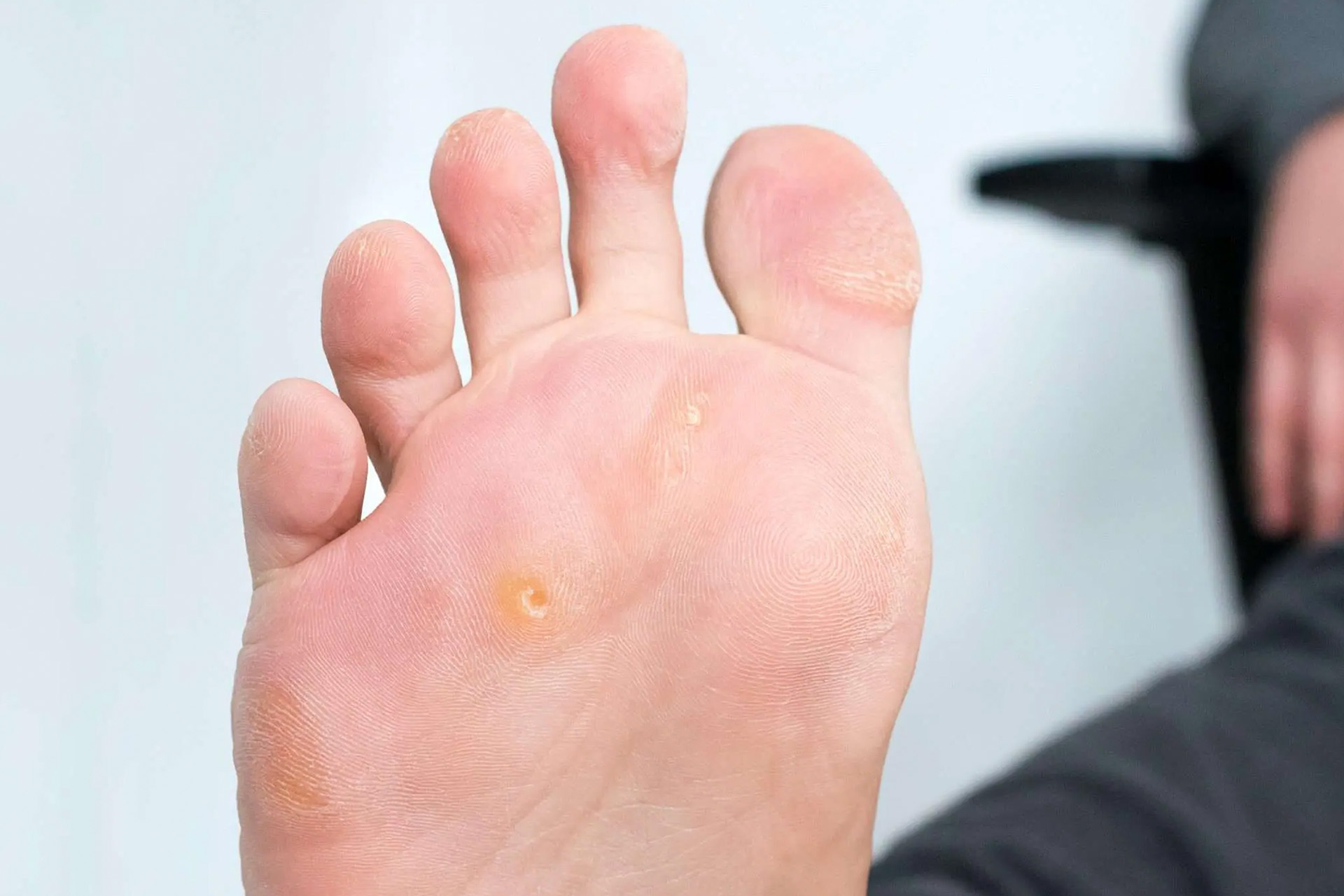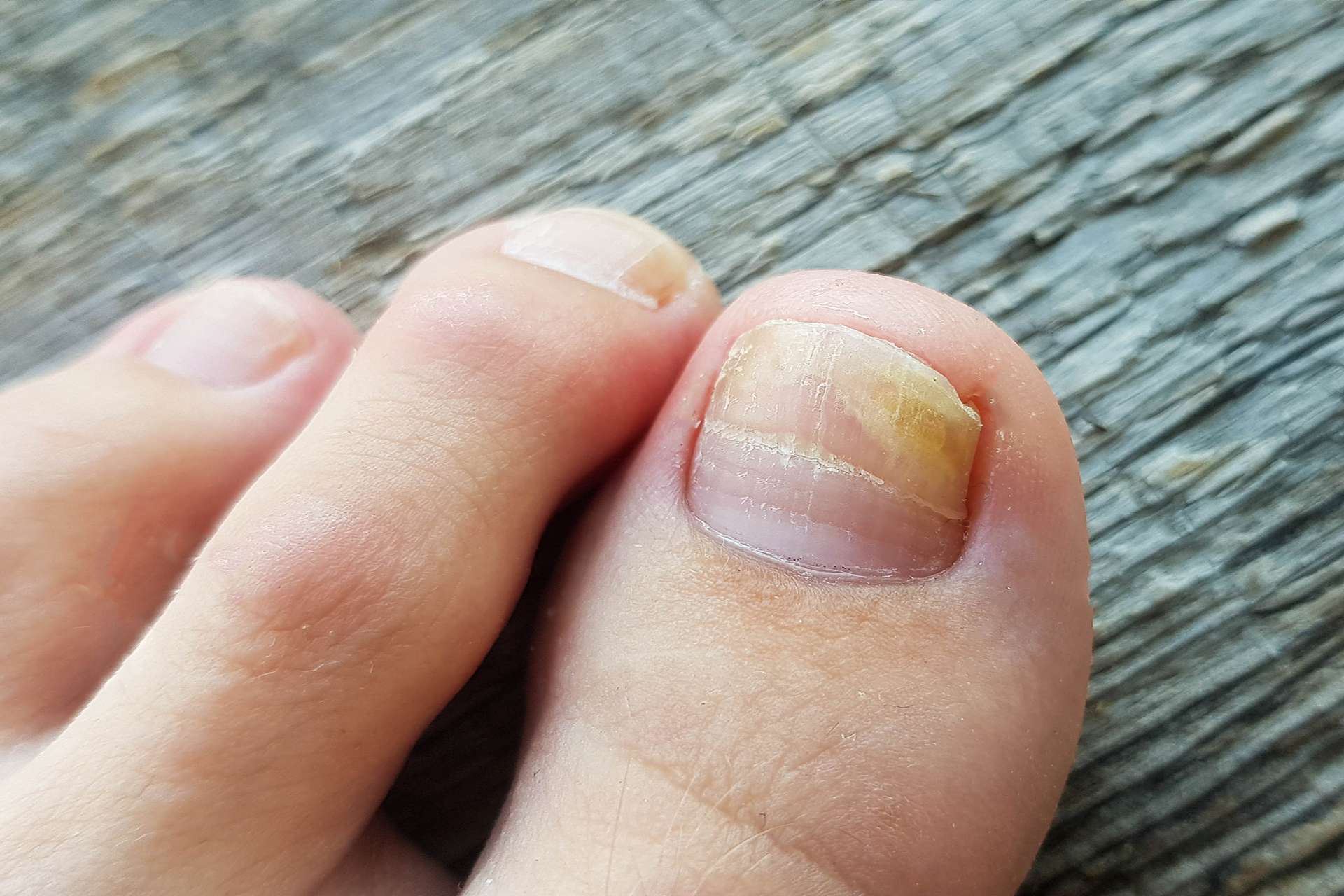What is an Ingrown Toenail?
An ingrown toenail occurs when the edge of the toenail grows into the surrounding skin. This can cause irritation, redness, and swelling. Any toe can be affected, but it is most common in the big toe. Mild cases may only cause minor discomfort, but if the nail continues to dig into the skin, it can cause pain, infection, and even difficulty walking.
Several factors contribute to the development of ingrown toenails, including improper nail trimming, tight footwear, genetics and nail trauma. Knowing the causes is key to preventing recurrence and keeping your feet healthy. Ignoring an ingrown toenail can lead to chronic pain, infection and difficulty wearing shoes, or walking comfortably.
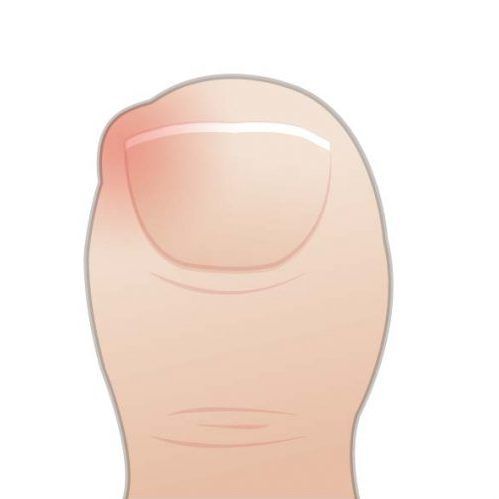
Causes and Risk Factors
Ingrown toenails can be caused by:
- Improper Nail Trimming: Cutting the nail too short or rounding the corners can cause the nail to grow into the skin.
- Tight Shoes: Wearing shoes that are too narrow or too tight can put undue pressure on the toes causing the nail to grow into the skin.
- Genetic Predisposition: Some people may be more prone to ingrown toenails due to their genetic makeup.
- Poor Foot Hygiene: Not keeping the feet clean and dry can contribute to the development of ingrown toenails, as the skin surrounding the nail becomes unduly soft.
- Trauma to the Toe: Dropping or stubbing something on the toe can cause an ingrown toenail.
- Fungal Infections: Fungal infections such as athlete’s foot can cause ingrown toenails.
Knowing these causes and risk factors can help you take preventive measures to avoid ingrown toenails.

Signs and Symptoms of an Ingrown Toenail
Recognising the early signs of an ingrown toenail is crucial for timely intervention. Symptoms start with tenderness and swelling along the nail border. As the condition worsens, the affected area may become red, warm and painful. The nail can then grow into the nail fold, causing irritation and discomfort. An infected toe with an ingrown toenail can become more severe and cause pus drainage, excessive swelling and difficulty walking.
A toe with an infected ingrown toenail needs prompt attention, as unmanaged infections can spread and become more serious. Seeking professional help by the expert podiatrists at The Foot Practice can help you avoid more invasive procedures.
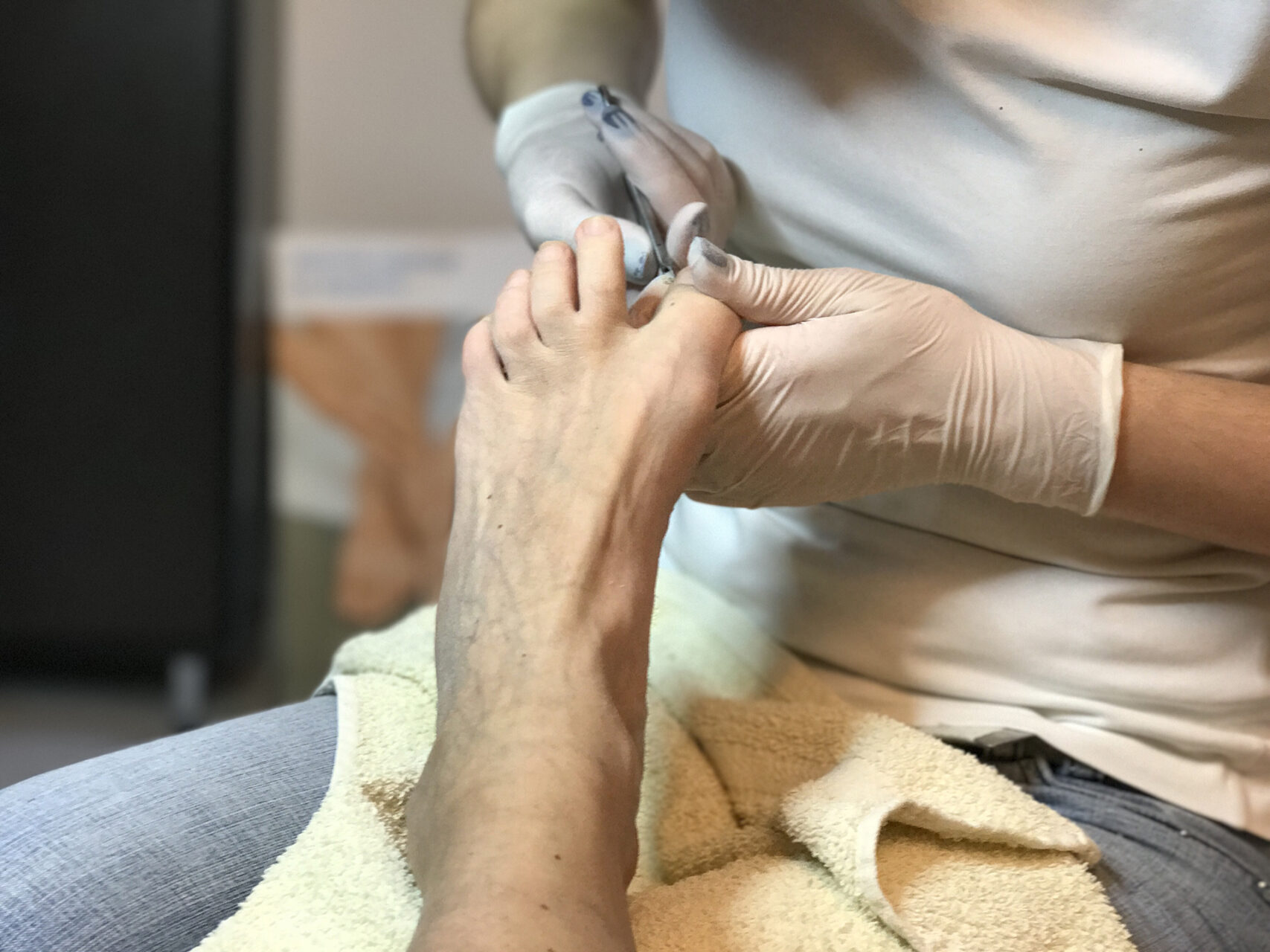
How to Manage an Ingrown Toenail at Home
Many mild cases of ingrown toenails can be managed at home with proper foot hygiene, warm saltwater soaks, and gently lifting the nail away from the skin. The last method must be done gently in a clean environment, to avoid any infection. Placing cotton under the nail’s edge can help the nail grow above the skin edge, which may take several weeks to heal. If pain persists, the condition worsens, or signs of infection appear, it’s time to seek ingrown toenail treatment from a podiatrist.
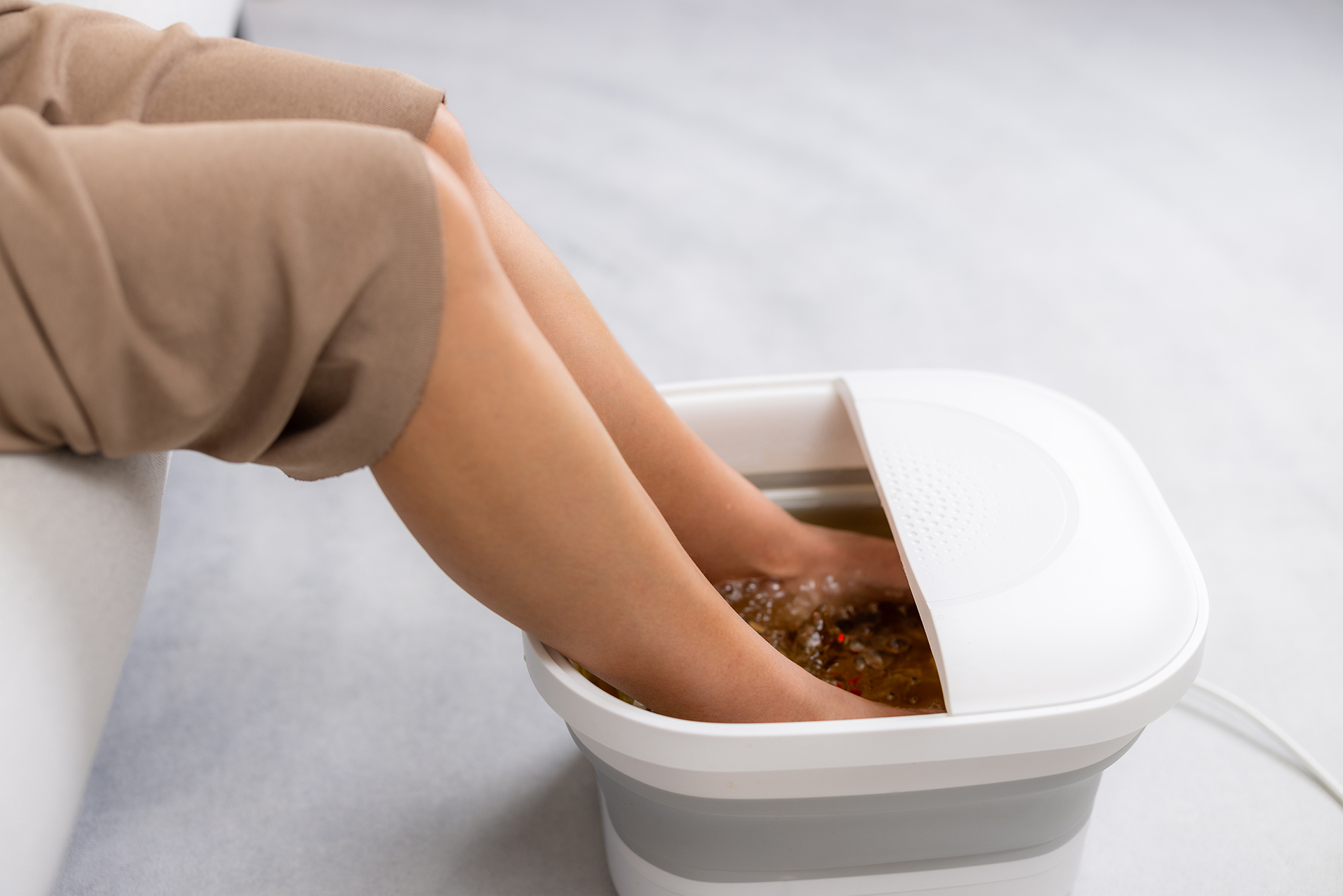
Infected Ingrown Toenails
Infected ingrown toenails are a serious condition that requires medical attention. Symptoms of infected ingrown toenails include:
- Redness and swelling
- Pus or discharge
- A foul odor
- Increased sensitivity to touch
- Pain and tenderness
To avoid an infection, it’s best to receive treatment for an ingrown toenail before such conditions arise. If you think you have an infected ingrown toenail, seek medical attention immediately. Your doctor may prescribe antibiotics and need to remove the ingrown part of the nail.
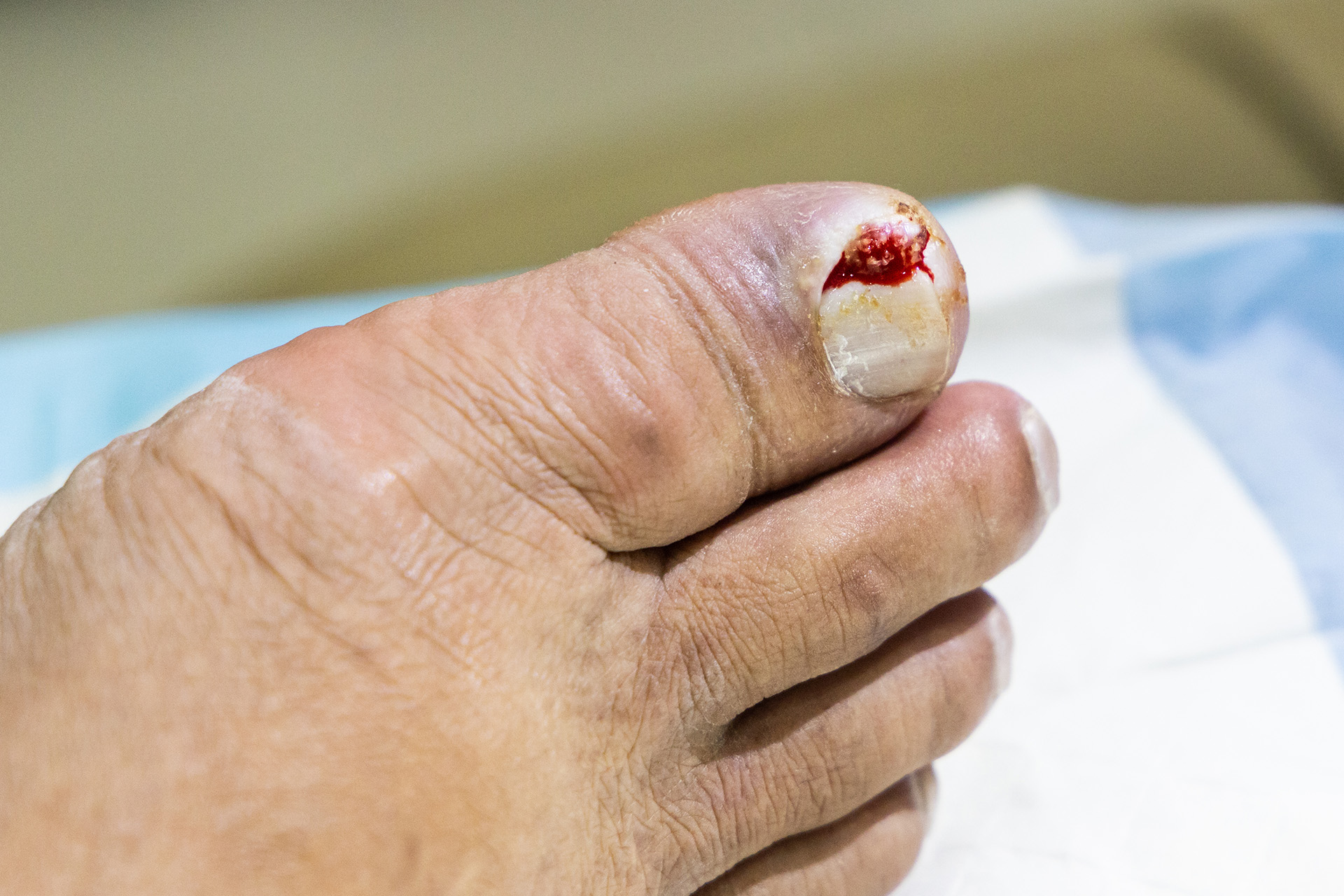
Why See a Podiatrist for Recurrent Ingrown Toenails?
At-home remedies can be helpful in mild cases, but podiatric care ensures ingrown toenails are managed safely and effectively. A podiatrist will know best how to treat an ingrown toenail. After properly assessing the condition, the podiatrist can recommend the best treatment, including:
- Nail Trimming and Guidance: If caught early, a podiatrist can trim the nail properly, reducing pressure on the surrounding skin and preventing further irritation.
- Nail Splinting or Packing: In some cases, a small splint or cotton packing may be placed under the nail edge to encourage proper growth and relieve discomfort.
- Antibiotics for Infection: If an ingrown toenail becomes infected, a podiatrist may prescribe topical or oral antibiotics to control the infection and promote healing.
If necessary, they can also offer advanced solutions like partial or total nail removal, prevent complications from unmanaged infections, and give guidance on how to prevent future occurrences.
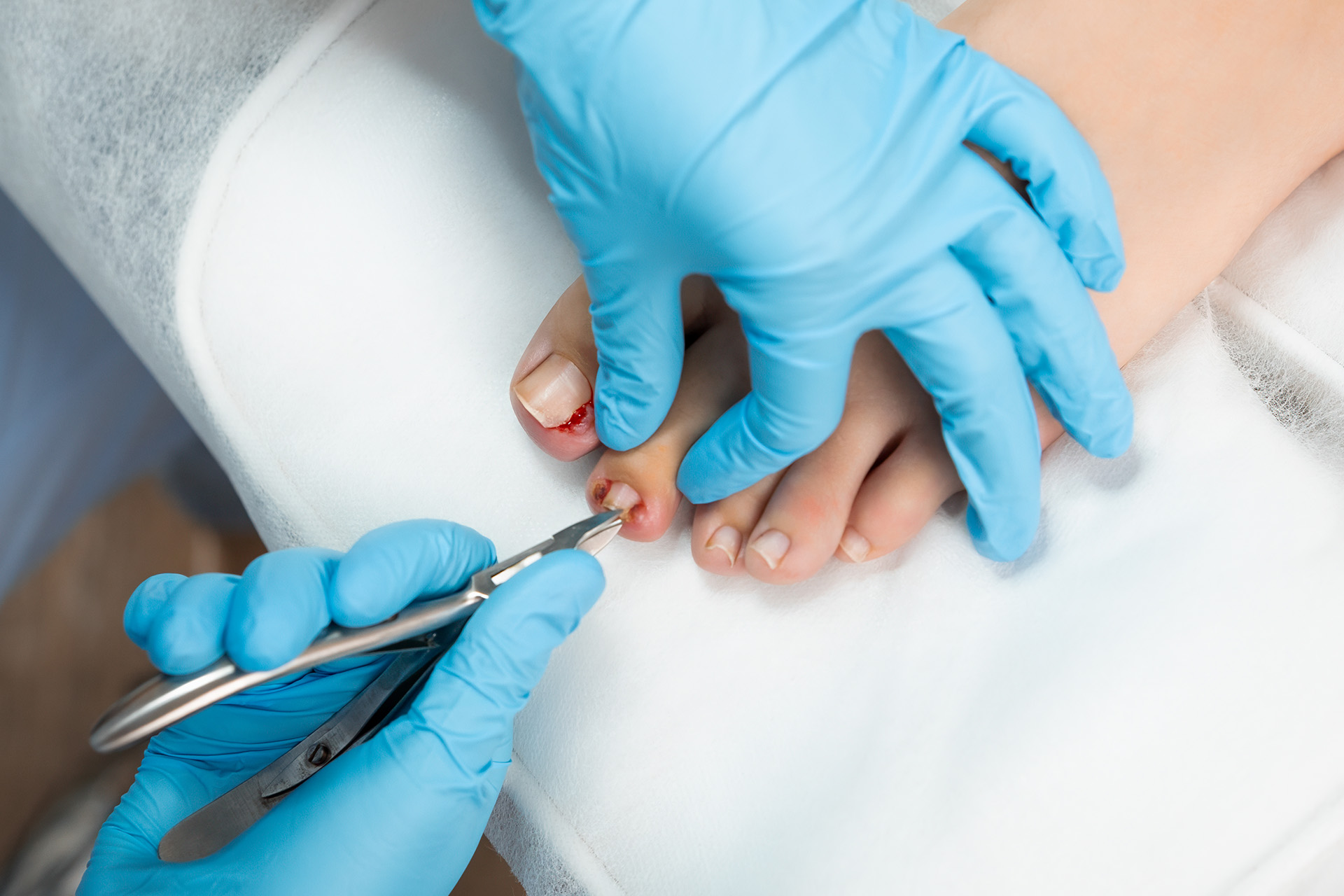
Infected Ingrown Toenail Removal Surgery
Ingrown toenail surgery may be the best option for recurring or painful cases. If necessary, a partial nail avulsion may be performed, in which only the affected part of the nail is removed. Usually done under local anaesthetic, this provides long-term relief.
For patients who experience frequent ingrown toenails, a matrixectomy may be recommended. This involves applying a chemical or laser to the affected part of the nail to prevent it from regrowing, reducing the likelihood of recurrence.
Ingrown toenail procedures are simple and effective for chronic cases. With proper aftercare, patients can quickly return to normal activities. Seek professional medical attention for a severe ingrown toenail to avoid complications and get proper treatment.

Foot Health and Ingrown Toenails
Good foot health is key to preventing ingrown toenails. Here are some tips to keep your feet healthy:
- Keep Your Feet Clean and Dry: Wash your feet regularly and dry them thoroughly to prevent infections.
- Trim Your Toenails Straight Across: Don’t cut the corners to prevent the nails from growing into the skin.
- Wear Shoes That Fit Properly: Your shoes should not be too tight and should provide enough room for your toes.
- Avoid Sharing Personal Care Items: To reduce the risk of infections, don’t share towels, nail clippers, or other personal items, especially in sports environments.
- Wear Breathable Socks: Choose socks made of cotton or wool to keep your feet dry and comfortable.
Following these simple tips can reduce the risk of ingrown toenails and improve overall foot health.
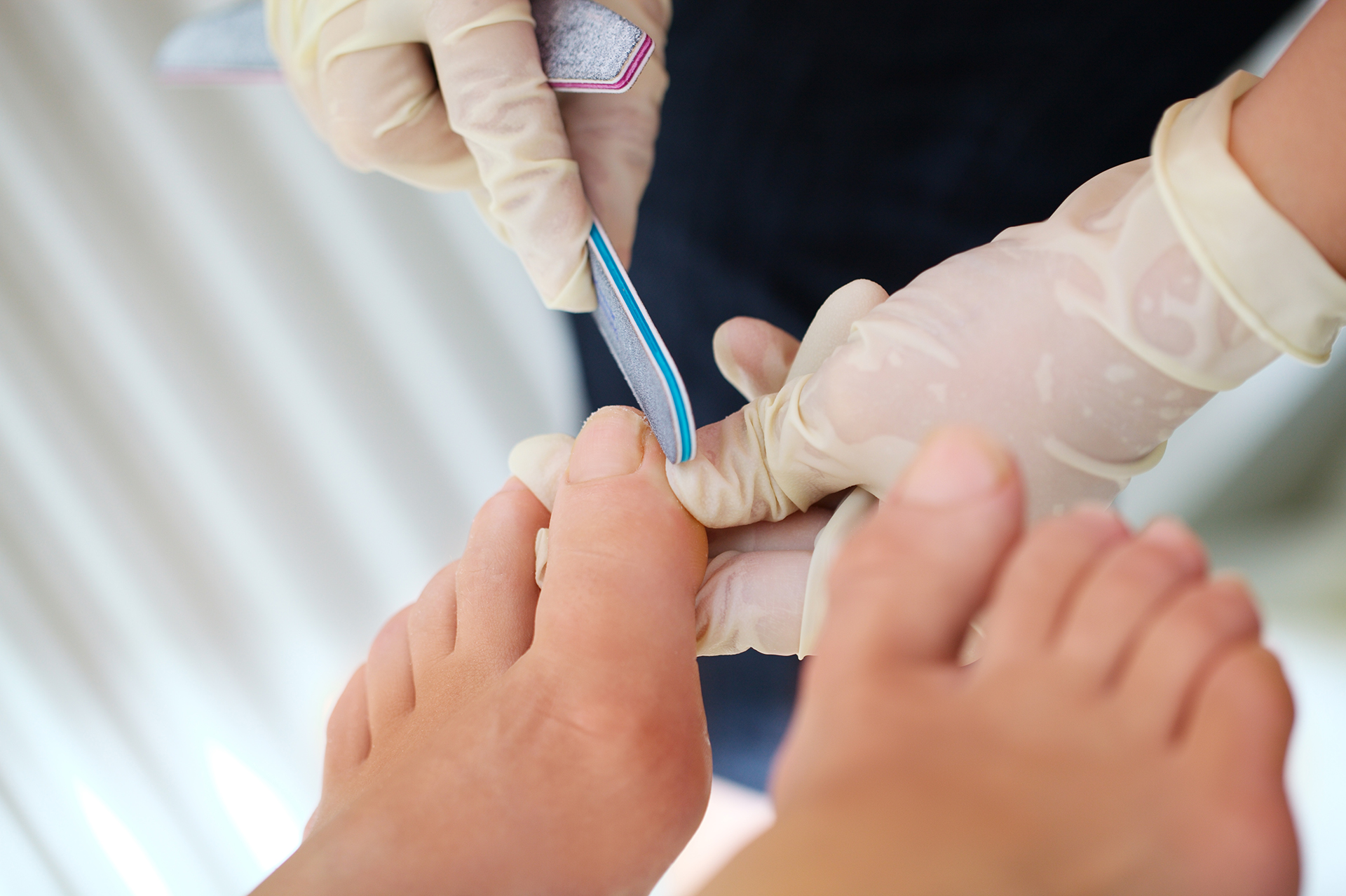
Take the First Step to Pain-Free Feet
An ingrown toenail may start as a minor annoyance, but if left unmanaged, it can become a painful and recurring issue. For those with persistent or painful ingrown toenails in Singapore, seeing a specialist ensures proper management and long-term relief.
Do you need ingrown toenail removal or advice on managing an ingrown toenail? The Foot Practice can provide customised solutions to keep your feet healthy and comfortable. Book an appointment today and take the first step to relief.




